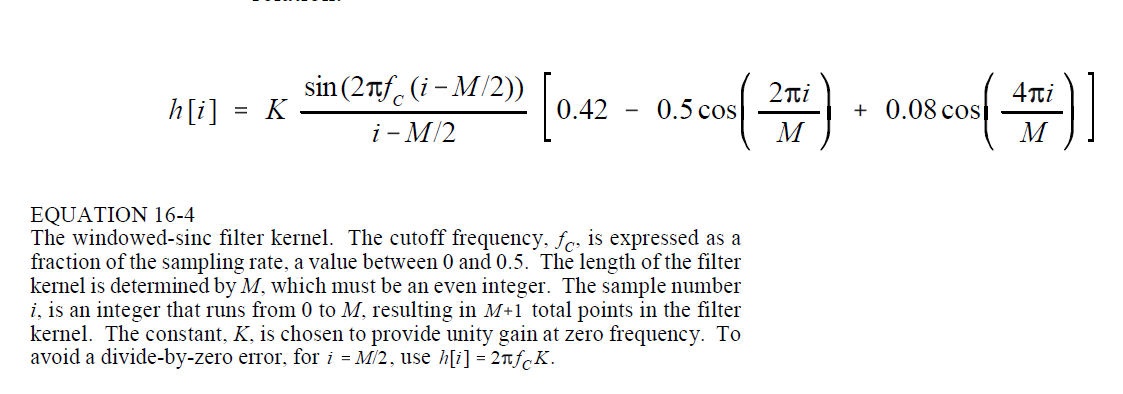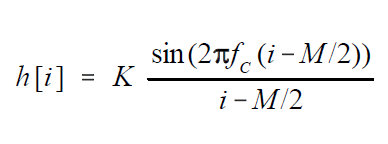Well first, to be clear, the part inside the square brackets is just the Blackmann window. The fraction to the left (without K) is the sinc function.
Secondly, for sin(x), x itself is not a frequency and therefore should not go in the frequency inlet of [osc~]. It's more like a phase input, if you were treating sin() as an oscillator (which it isn't in this case). If you wanted to use dsp object to make this, you'd be better suited using [expr~ sin($v1)]. You could also use [cos~] but it expects a normalized phase, not radians, and needs a phase offset to make it act like sin().
Since FIR filters like these use convolution and tend to have long kernels, implementing it with vanilla objects can be a nightmare. You could probably use the FFT objects to do it, but since the overlap is based on the kernel size you might be restricted on what sizes you can use (I'm not entirely sure about that, though, never tried it).
I used to use [iemlib/FIR~] for it, but it doesn't seem to be working on 64-bit systems. You can use [bsaylor/partconv~], though. It does partitioned convolution and is meant for long IRs, but it works just fine for FIR filters as well. The annoying thing is that whenever you update the kernel you have to resend it to [partconv~] and you get some clicks and messages in the console when you do that.
Attached is an implementation. M is variable, between 3 and 255. As you can see, M doesn't actually need to be even. Odd values for M just place a zero at the Nyquist frequency, so the roll-off at high frequencies is different for even and odd values. I just used [until] to generate the kernel, so no dsp objects needed.
FIR_example.zip



